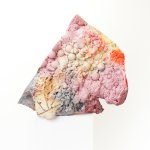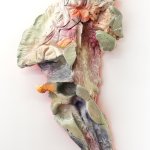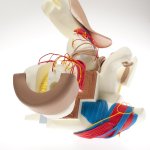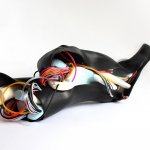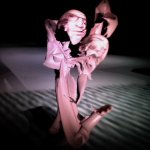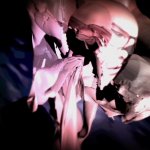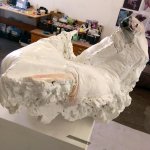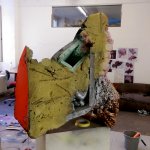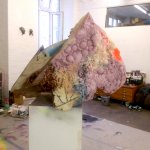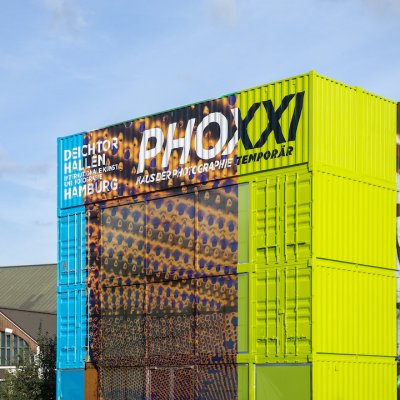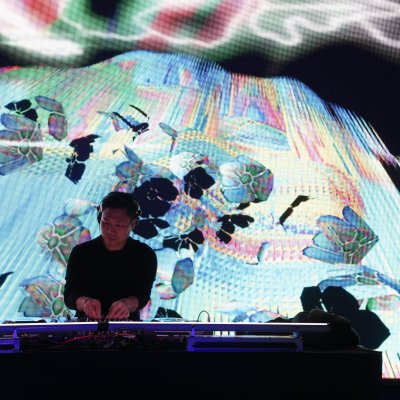Our human future and our body is becoming heavily shaped by medical implants and mutations through technology. The utopia to create the most efficient body causes a dystopia of alienated body parts. With hacks and extensions we might secretly desire to overcome the organic.
Martin Bőttger is a versatile artist using different forms of expression to open up a debate about the use of technology and modification of a human body.His latest work VYGER was presented at PLATOON from 1st to 8th of April. Before the vernissage on Friday we had an interesting talk with the artist.
As an artist you address several controversial topics such as plastic surgery, body implants, NASA experiments in space and mass obedience. What is the role of art and you as an artist in society when dealing with such questions?
Art has no function by itself – it only has the power to show us new things from different perspectives and to stimulate emotions and feelings in us that we perhaps don’t know. With the exhibition, my role as an artist is to show the society a possibility of what might happen if we go ahead with technology and modifications of a human body from both sides. I open a space through which people can decide what is better for them – believing in it or not. My task is not to tell what the best way is, it is more an approach to make us think about what happens if we follow or lose our inner voice, when complying with modifications.
What is the impact of a physical transformation on human consciousness and spirit?
My recent work is dealing with the relationship between physical and spiritual. We use adjustments and technology to make us better. The result of our image about how we can improve ourselves is a physical transformation. It starts with an emotion and ends with a metamorphosis. In my work one can identify a possibility of a physical transformation but the more important question is how it affects ones spirit. Maybe the sculptures do not fit in one’s personal understanding of evolution and that is ok. One needs to think about what is better for them – utopia or dystopia; what is saving your mind?

Please elaborate on the concept of combining the fictional organic structure and alienated objects.
The concept came up through my love for fiction films such as Akira, Ghost in the Shell, District 9, Blade Runner, as well as artists and musicians like Hieronymus Bosch, John Chamberlain, Anthony Rother, Dead Fader and Aphex. Skin, organ models from medical science, and gunpla robot toys are very inspiring for me and my work. The most recent objects I have made are a combination of a futuristic dystopian image of sci-fi technology in relation with a natural process. The sculptures are based on a 3D computer through generated sketches with typical simulated materials I have used for the appearance.
What personal relationship to your sculptures have you evolved during the process of making them?
My idea has grown through different stages during the last two years. I started a series of six futuristic real scale body organ models like arms and legs made of plastic materials and gum. For the recent VYGER series I needed to go deeper into the topic and explore new materials and techniques. The sculptures are always in my mind, through them I work and think about the next object that I will explore with in the future.
You are a versatile artist creating 3D motions, installations, sculptures, producing sound as well as doing performances. What connects all these different forms of expressions?
I like to circulate my ideas across different expressions. For example, I work with my music project Moma on a sound environment that is mixing styles of music like noise and grime, different soundscapes as well as IDM and rave – it all comes back into 3d animations, stage projections and music videos. On the other side, installations and sculptures are based on animations and renderings I have done. My intention is to transform the whole into real objects. It all interlaces with each other, because this is the way I see the world. I deal with my emotions as well as with my mind. My work is growing in between.
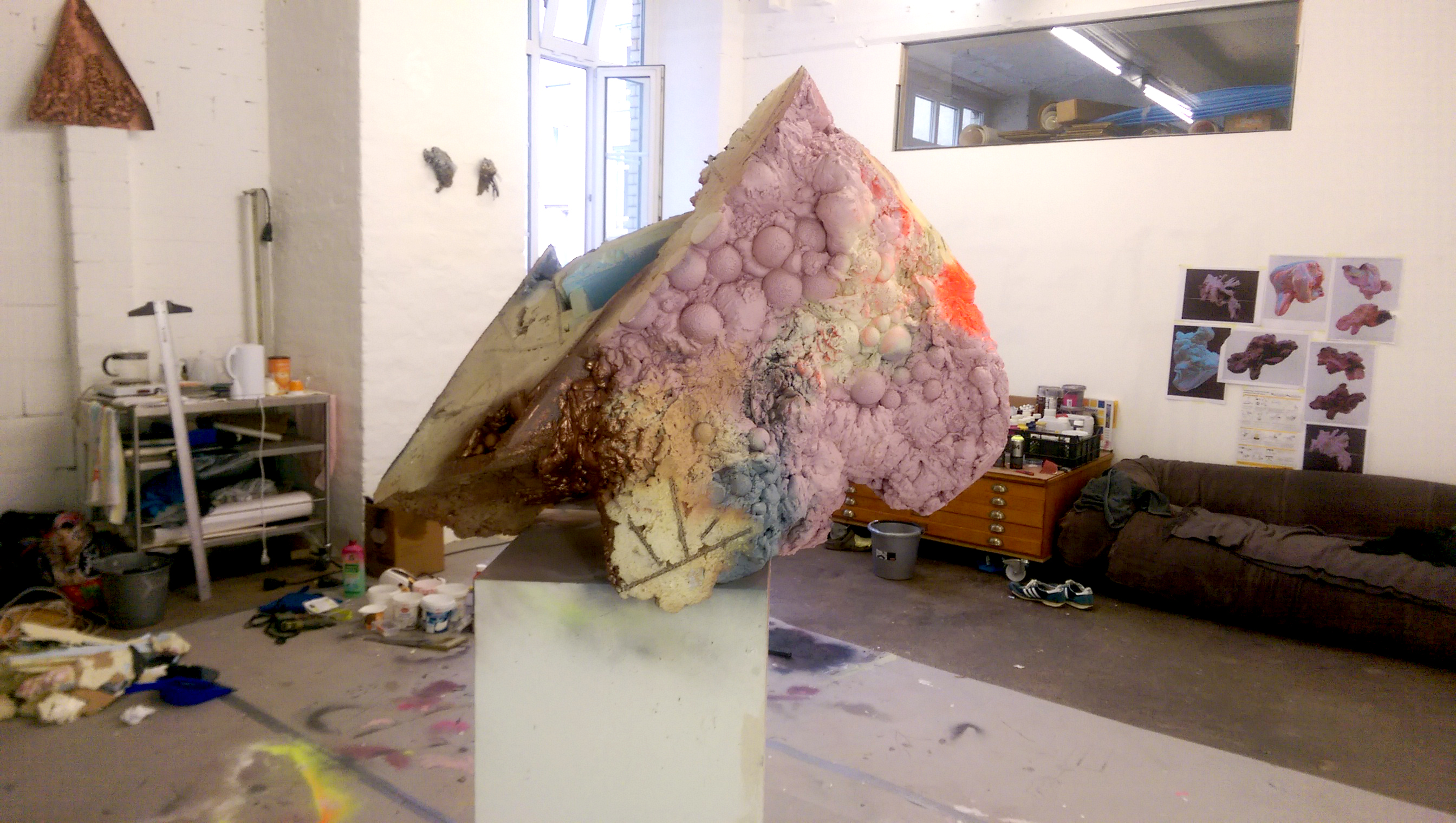
What has been the reaction from the public to your first show of VYGOR in Leipzig?
We had conversations about digital interventions in our life as well as medical science, cloning etc.Visitors liked the richness of detail in my work. It reminded people of lots of different things like skin, like porcelain or blow up sex toys.
Which recent transformation or modification of a human body has fascinated you the most?
3D printed organs like hand proteases and the cyborg-looking implants under one’s skin that become a connection to your mobile, also human-looking artificial intelligence as Sophia, the robot. What fascinates and inspires me the most is a mixture of things I have seen in movies and things science is exploring right now.
Technology is starting to become part of our bodies and trying to enhance our functions & capabilities. What is your opinion on it?
I love technology! I would love to have a connection to my computer so that it could understand what I am thinking and help me being faster and more effective in the creative process. I can imagine creating without the use of my hands, just thinking about my creations and an artificial intelligence would produce what is inside my head. In my imagination we don’t need different softwares, in contrast, we need just one – our mind. It feels like the idea of a computer or a device is old and outdated. I prefer to think about more utopian, futuristic-organical-chrome extension that would connect with our mind and create what we would imagine. But for now, on the other hand, due to today’s world of overwhelming high-tech around us, it is more and more important to use the “off button” in our minds – to create a digital silence, to take a rest, refresh ourselves and go back to our human nature. However, being able to do that depends on knowing where, and what the off button is.



